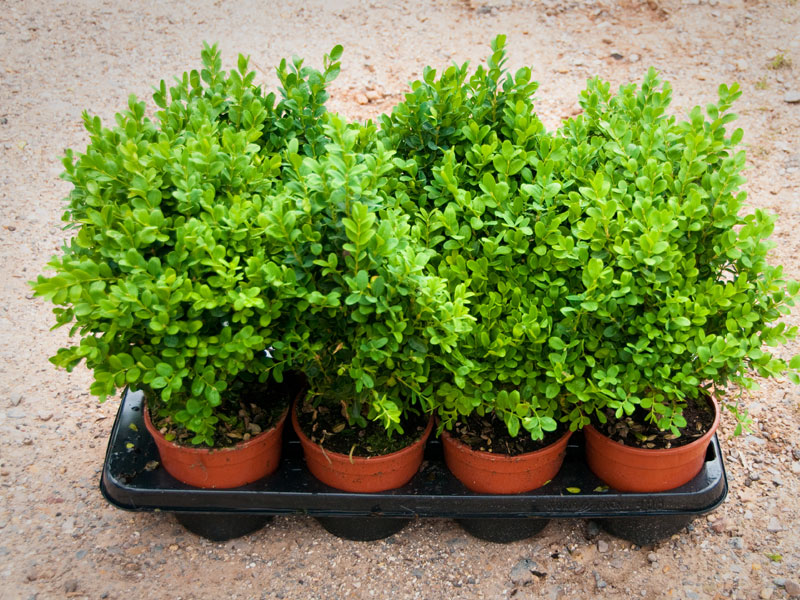Buxus suffruticosa – Box Hedging

Buxus suffruticosa – Pot Grown
| Botanical Name | Common Name | Sizes Supplied | Item Price (£) + VAT | Type |
|---|---|---|---|---|
| Buxus suffruticosa | Box | 20-25cm | 6.50 | P14 |
Buxus suffruticosa – Bare Root & Root Ball
| Botanical Name | Common Name | Sizes Supplied | Item Price (£) + VAT | Type |
|---|---|---|---|---|
| Buxus suffruticosa | Box | 15-20cm | POA | BR |
| Buxus suffruticosa | Box | 30-40cm | POA | BR |
| Buxus suffruticosa | Box | 40-50cm | POA | RB |
| Buxus suffruticosa | Box | 60-70cm | POA | RB |
| Buxus suffruticosa | Box | 70-80cm | POA | RB |
Key: RB = Root Ball | BR = Bare Root | (Available November to March)
Details / Key Facts
Buxus sempervirens Suffruticosa, The traditional dwarf box often used in parterres or small hedges. Suffruticosa has shining, rich green small leaves and an oblong shape, often notched at the tip and slightly cupped. It may be kept severely clipped for dwarf hedges, but when left to grow freely, it forms sculptured, cloud-like mounds.
Family – Buxaceae
Genus – Buxus can be evergreen shrubs or small trees, with simple, leathery, opposite leaves and clusters of small, pale yellow flowers followed by pale green to brown fruits.
Details – Buxus sempervirens Suffruticosa a much slower growing cultivar suitable for parterres and small hedges. Traditional dwarf box, compact and very slow growing. Plants offered under this name can be variable and nurseries should be asked to guarantee compact habit. Alternatively, propagate from plant material that shows the desired characteristics. Height and spread 90cm (3ft) by 1.5m (5ft)
Cultivation -Grows best in well-drained soil in partial shade; can be scorched by sun and strong winds. Susceptible to a number of box problems
Propagation – Propagate from semi-hardwood cuttings
Suggested planting locations and garden types – Drought Resistant Hedging & Screens Low Maintenance Banks and Slopes Ground Cover Garden Edging Patio & Container Plants Mediterranean Climate Plants
Key Facts
- Common name: Box
- Botanical name: Buxus sempervirens
- Group: Shrub, Hedge
- Flowering time: n/a
- Planting time: Autumn or spring
- Height and spread: Up to 5m by 5m (16ft by 16ft), but can be kept smaller
- Aspect: Sun or shade
- Hardiness: Fully hardy
- Difficulty: Easy
How To Grow
Cultivation notes
Box is tolerant of a wide range of soil types, provided there is adequate drainage and it does not dry out completely. A reliably moist soil is especially important if growing in full sun, otherwise the foliage may scorch. Box will tolerate deep shade and is ideal for planting beneath taller trees.
Planting in the garden
- Box should be planted in autumn or spring
- For hedging prepare a planting area by thoroughly cultivating the soil to a spade’s depth and up to 90cm (3ft) wide
- For individual specimens dig a planting hole to a spade’s depth and a diameter of three times the width of the rootball
- On poorer soils spread organic matter, such as well rotted manure or garden compost, over the prepared area and fork in. Do not place organic matter in the bottom of a planting trench or hole
Spacing
- Plant common box, Buxus sempervirens about 30-40cm (1ft-16in) apart
- Compact cultivars, such as B. ‘Suffruticosa’ and Buxus microphylla, can be planted 10-15cm (4-6in) apart
Pruning & Training
Cut back young hedge plants and topiary by up to one-third in May to encourage bushy growth. Further trimming can be carried out between May and August, as required.
Trim mature hedges and topiary in August. It may be worth noting that although box hedging and topiary can be pruned towards the end of May, pruning at this time may leave the new flush of soft growth vulnerable to weather damage such as leaf scorch, the result of late frosts, drying winds or unseasonably hot sun and, additionally, diseases such as box blight. Pruning later, during August when the new growth has hardened off and slowed down should help minimise leaf damage due to weather conditions or disease and the hedge should remain neat through the winter months.
Old, neglected plants usually respond well to hard pruning in late spring (May) and can be cut back to within 15-30cm (6in-1ft) of the ground.
Delivery charges may apply and will be based on the order size and location so, please provide us with as much information when you contact us with your enquiry.
If you would prefer to collect up your order please email sales@langleyhorticulture.co.uk to make an appointment.
Please note that payments cannot be made online. A member of staff will call you and take payment over the phone.
